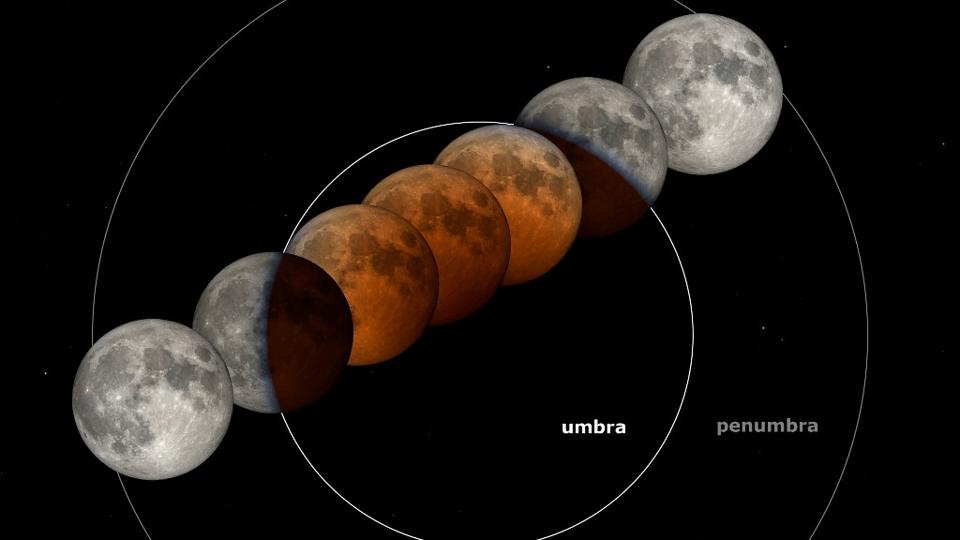


A total lunar eclipse, commonly called a “blood moon,” will be seen across North America overnight on Thursday, March 13 through Friday, March 14, with all U.S. states seeing at least part of the spectacle. The event — not seen since 2022 and not at its best again until 2029 from North America — occurs when Earth’s shadow completely covers the moon, giving it a reddish glow.
During a total lunar eclipse, the moon moves right to left, passing through the penumbra and umbra, ... [+]
Total lunar eclipses occur when the Earth moves directly between the sun and the moon, with the moon slowly moving through Earth’s shadow in space. Unlike solar eclipses, lunar eclipses are completely safe to view with the naked eye.
The totality phase of this eclipse — when the lunar surface will turn reddish — will last for 65 minutes, during which the moon will be entirely within Earth’s umbral shadow.
This total lunar eclipse will be relatively shallow eclipse because the moon will not pass directly through the center of the umbra. Instead, it will enter only the northern portion of the umbra, making the moon’s northern side likely brighter and its southern side likely darker during totality.
The moon will appear slightly smaller than on average because it will be near to apogee, its farthest point from Earth during each orbit. At apogee, the moon is about 252,000 miles (405,000 km) away, making it look around 14% smaller than when it is closest to Earth at perigee.
For those unable to view the eclipse in person, live streams will be provided by Timeanddate and The Virtual Telescope Project.
Observers in the eastern and central U.S. will see totality in the early morning hours, while those in the western U.S., Alaska, and Hawaii will experience totality before or just after midnight local time. Here are the exact times for totality in each U.S. time zone:
“The moon will align perfectly with the sun and Earth, creating a breathtaking total lunar eclipse visible to everyone across North and South America,” said Franck Marchis, SETI Institute astronomer and co-founder of Unistellar, in an email. “This rare cosmic arrangement is a wonderful reminder of our place in the universe — and a perfect opportunity to capture it for posterity.”
During the totality phase of a total lunar eclipse, no direct sunlight can reach the lunar surface. This causes it to turn red during. According to timeanddate.com, that happens because of Rayleigh scattering, the same reason sunsets appear red. Shorter-wavelength blue light strikes atoms more easily and scatters in Earth’s atmosphere, while longer-wavelength red light more easily travels through Earth’s atmosphere without striking atoms, and onto the lunar surface. The exact shade of red depends on how much dust, water droplets and volcanic ash is in Earth’s atmosphere.
This week’s event will be the best total lunar eclipse visible in the U.S. until March 2029. While another total lunar eclipse will happen on Sept. 7, 2025, it will only be visible from Asia, Australia and parts of Europe. During that event, totality will last for 82 minutes. The next total lunar eclipse visible from North America will occur on March 3-4, 2026, but it will only to observers in Hawaii, Alaska and western regions of the U.S. and Canada, where totality will last for 58 minutes.

